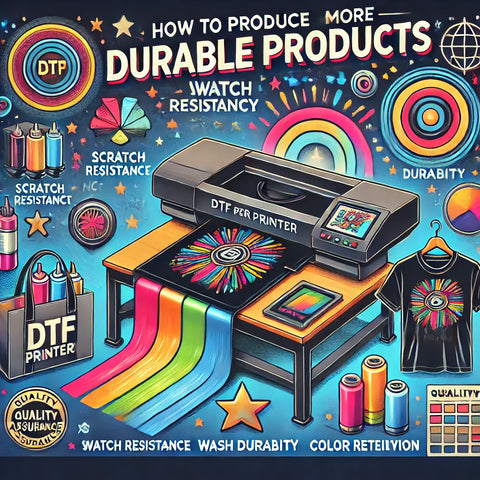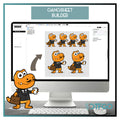The e-commerce industry is more competitive than ever, and the key to long-term success is finding a niche that sets you apart. Instead of trying to sell everything to everyone, focusing on a specific niche market allows you to target the right audience, reduce competition, and build a loyal customer base.
Whether you're selling custom printed apparel, eco-friendly products, or handmade accessories, choosing the right niche can increase your sales and brand authority.
So, how do you find your niche in e-commerce and turn it into a profitable business? Let’s dive into the best strategies to define your niche and maximize sales! 🚀
1. What Is a Niche in E-Commerce?
✔ Why It Matters:
A niche market is a specific segment of a broader market that has unique customer needs and preferences.
✔ Examples of Niche Markets:
✅ Sustainable fashion – Eco-friendly and ethically sourced clothing.
✅ Custom-printed sportswear – Personalized gym and fitness apparel.
✅ Pet lovers’ accessories – Unique products for pet owners.
✅ Minimalist home decor – Simple, stylish, and functional home products.
📌 Pro Tip: The more specific your niche, the easier it is to target and attract loyal customers.
🚀 Example: Instead of selling "T-shirts", a niche store selling "custom DTF-printed anime T-shirts" attracts a more engaged audience.
2. How to Identify Your E-Commerce Niche
✔ Why It Matters:
Choosing the right niche helps you differentiate from competitors and reach the right customers.
✔ Steps to Find Your Niche:
✅ Analyze your interests & expertise – What are you passionate about?
✅ Research market demand – Use tools like Google Trends, Etsy, and Amazon Best Sellers to find trending niches.
✅ Check competition levels – Avoid oversaturated markets, but ensure there’s enough demand.
✅ Identify a specific problem to solve – Find a gap in the market and create products that offer unique value.
📌 Pro Tip: Use platforms like Ahrefs, SEMrush, and Ubersuggest to analyze search trends and keyword competition in your niche.
🚀 Example: A seller notices a rise in demand for custom-printed gaming mousepads—they launch a store specializing in high-quality, personalized mousepads.
3. Validate Your Niche Before Investing
✔ Why It Matters:
Testing your niche before fully committing helps you avoid financial risks.
✔ Ways to Validate Your Niche:
✅ Create sample products – Use print-on-demand services to test designs.
✅ Run small-scale ads – Use Facebook & Instagram ads to see if your products attract interest.
✅ Check social media engagement – Post niche-related content and gauge audience response.
✅ Sell on marketplaces first – Start with Etsy, eBay, or Amazon before launching your own website.
📌 Pro Tip: Run a pre-order campaign to test demand before mass production.
🚀 Example: A niche fitness apparel brand launches an Instagram page and gets high engagement on custom-designed workout leggings, confirming market demand.
4. Position Your Brand Effectively in Your Niche
✔ Why It Matters:
Once you have a niche, you need a strong brand identity to connect with your target audience.
✔ Branding Strategies for Niche Success:
✅ Create a compelling brand story – Show why your niche matters to you and your customers.
✅ Develop a unique selling proposition (USP) – Highlight what makes your products better or different.
✅ Choose a niche-specific brand name & logo – Your name should reflect your niche focus.
✅ Maintain brand consistency – Use the same colors, tone, and messaging across all platforms.
📌 Pro Tip: Use emotional storytelling to create a connection with your audience.
🚀 Example: A custom eco-friendly tote bag brand shares behind-the-scenes content about sustainable production to build brand trust.
5. Market Your Niche Products to the Right Audience
✔ Why It Matters:
Targeted marketing increases brand visibility and conversions while reducing advertising costs.
✔ Best Marketing Strategies for Niche Brands:
✅ SEO for niche keywords – Optimize product titles and descriptions for specific search terms.
✅ Leverage social media – Platforms like Instagram, TikTok, and Pinterest work best for visual products.
✅ Collaborate with micro-influencers – Small influencers often have a highly engaged niche audience.
✅ Offer exclusive promotions – Early-bird discounts or loyalty programs increase retention.
✅ Email marketing for personalization – Send niche-relevant content & offers to repeat customers.
📌 Pro Tip: Use user-generated content (UGC) to boost credibility and social proof.
🚀 Example: A handmade jewelry brand runs a TikTok campaign showcasing unique gemstone rings, driving high engagement and sales.
6. Expand Your Niche Offerings Strategically
✔ Why It Matters:
Once your niche store gains traction, you can expand strategically without losing focus.
✔ How to Expand Within Your Niche:
✅ Introduce complementary products – Sell items that your audience already buys.
✅ Offer customization options – Personalized products increase brand loyalty.
✅ Create niche bundles – Group related products into higher-value bundles.
✅ Listen to customer feedback – Analyze best-selling items and customer requests.
📌 Pro Tip: Stay within your niche identity while gradually adding related products.
🚀 Example: A custom pet-themed apparel brand expands to matching pet accessories, increasing average order value.
Final Thoughts: How to Succeed in Niche E-Commerce
📌 Key Takeaways:
✔ Identify a profitable niche based on passion, market demand, and competition.
✔ Validate your niche idea before committing fully.
✔ Build a strong brand identity with clear messaging and storytelling.
✔ Market strategically through SEO, social media, and influencer collaborations.
✔ Expand wisely by offering related products that match your niche audience’s needs.
🚀 Want to stand out in e-commerce? Define your niche, connect with your audience, and build a brand that dominates your market!






